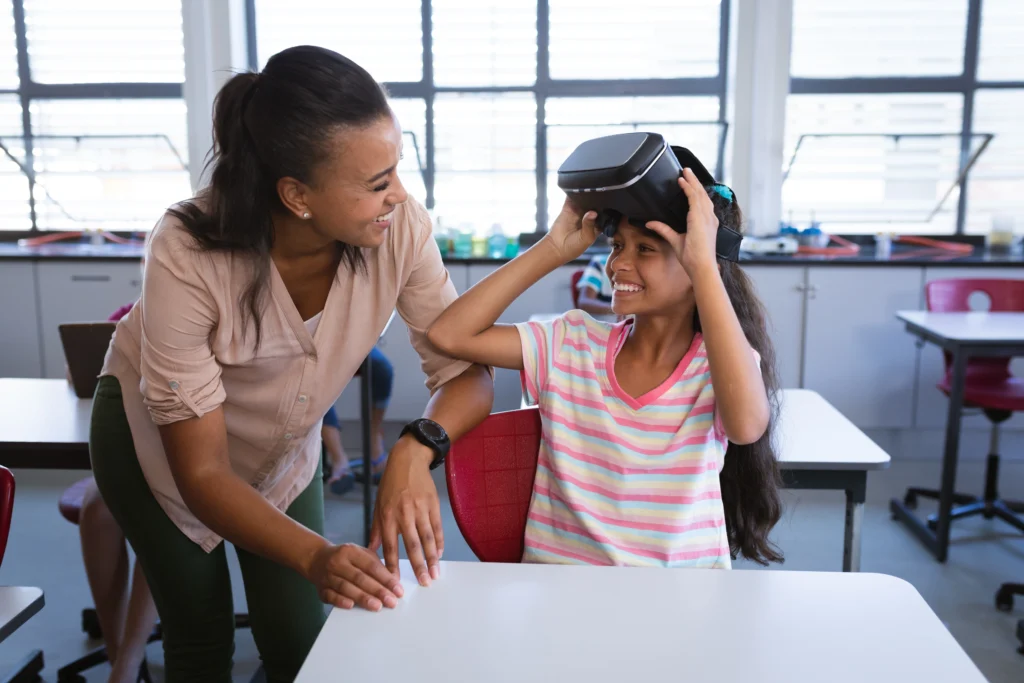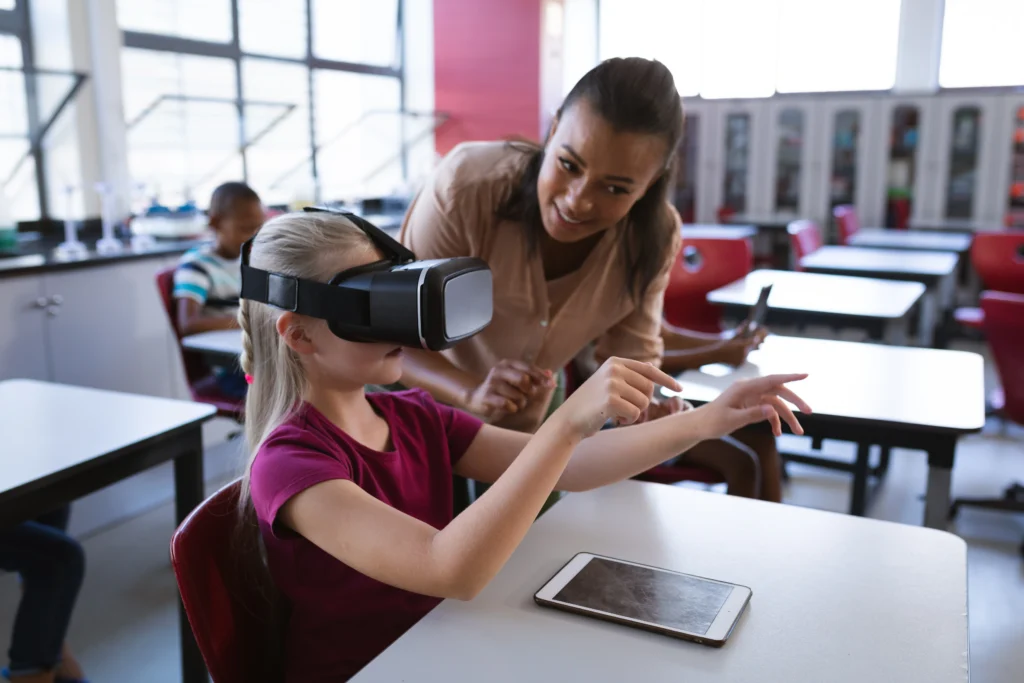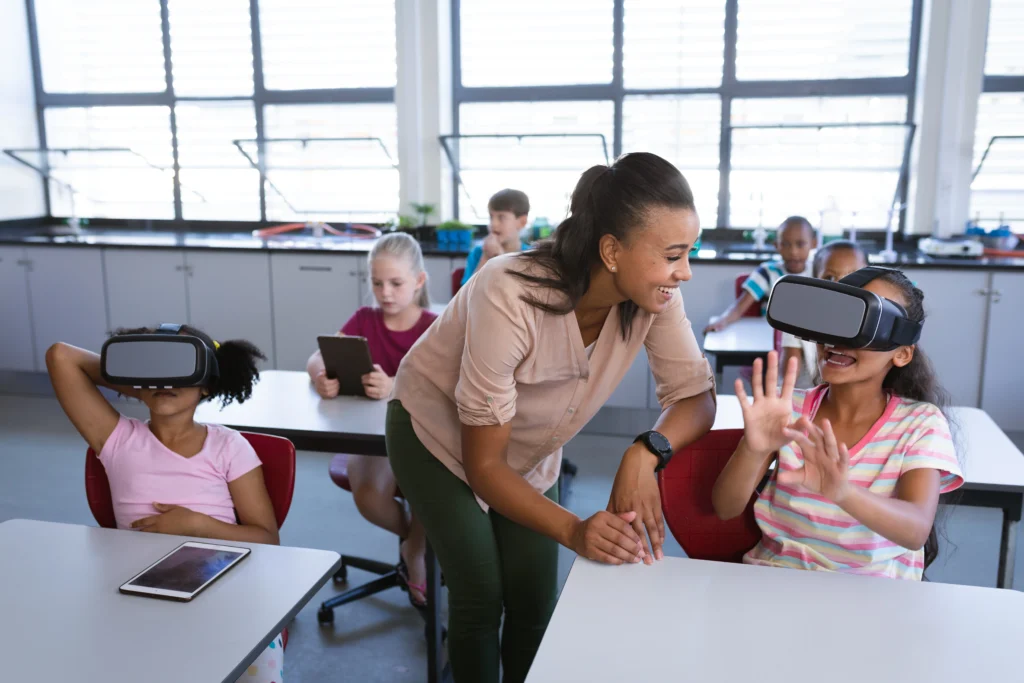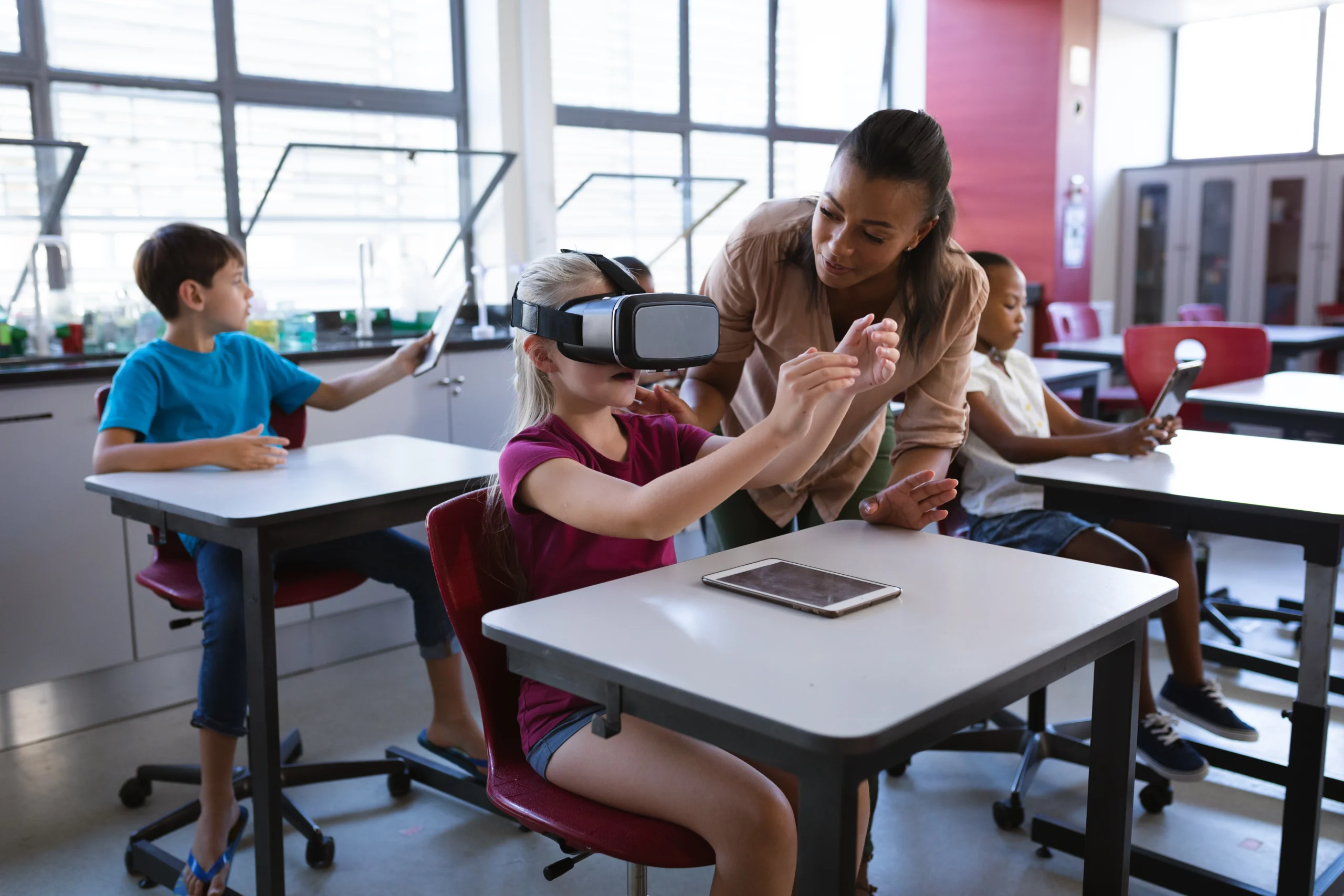Listen to a discussion about this blog
by VOISS / iKnow | Created Using NotebookLM
Virtual reality (VR) has earned its reputation as a game-changing tool in education. However, budget constraints and limited resources can make this technology seem out of reach for many special education classrooms. The good news is that Carreon et al. (2023) provide a roadmap for educators to harness the power of VR without breaking the bank. With the right strategies, educators can create transformative learning experiences that are affordable and accessible.
Start with What You Have
One of the most striking insights from Carreon et al. (2023) is that you don’t need high-end headsets or cutting-edge equipment to implement VR. Many schools already have devices capable of running applications, such as iPads, Chromebooks, or basic laptops to provide a still immersive extension of reality.
Tips for Educators:
Leverage Existing Technology: Identify what devices are already available in your school or district. Many VR apps are compatible with mobile devices or computers, reducing the need for new purchases.
Explore Free or Low-Cost Apps: Platforms like Google Expeditions or CoSpaces EDU offer immersive experiences at little to no cost, making them perfect for educators who want to try VR for the first time.
VOISS Connection: VOISS Advisor’s curated tools and lessons are designed to integrate seamlessly with commonly available technology, making VR implementation easier for educators with limited resources.

Free Resources and Affordable Solutions
Carreon et al. emphasize the importance of free or inexpensive VR applications that align with educational goals. With millions of apps available across platforms, finding the right ones can feel overwhelming, but there are reliable options tailored to classroom use.
Recommended Free Apps:
Google Arts & Culture: Explore virtual museums and famous landmarks.
National Geographic VR: Take students on interactive nature and history tours.
Nearpod VR: Engage students with interactive lessons and 360-degree videos.
Affordable Paid Apps:
CoSpaces EDU: Build and explore virtual worlds ($179.99/year for up to 30 students).
ClassVR: Offers pre-created VR content and curriculum-aligned resources ($399/year).
VOISS Connection: Pairing these apps with VOISS Advisor’s lessons allows educators to customize VR experiences to meet the unique needs of their students.
Emphasizing Accessibility
Special education classrooms require affordable technology that is accessible to students with diverse needs. VR applications can be adapted to ensure inclusivity.
Strategies for Accessibility:
Adjust Features: Many VR apps allow for customizable settings, such as adjusting sound levels, simplifying navigation, or adding visual cues.
Non-Immersive Options: Carreon et al. (2023) highlight non-immersive VR—using screens rather than headsets—as a cost-effective way to provide VR experiences without overstimulating students.
Engage with Visuals and Audio: Apps with strong visual and auditory elements help students with processing or sensory challenges.
VOISS Connection: VOISS Advisor’s tools support differentiated instruction, helping educators modify VR experiences to accommodate individual student needs while tracking progress.

Creative Funding Solutions
If budget constraints remain a barrier, Carreon et al. suggest exploring alternative funding methods to bring VR into classrooms.
Funding Ideas:
Grants: Look for education technology grants from organizations like DonorsChoose, ISTE, or local foundations.
Community Partnerships: Partner with local businesses or nonprofits that may be willing to sponsor VR equipment or software.
Shared Resources: Collaborate with other teachers or departments to share devices and spread costs.
VOISS Connection: VOISS Advisor offers cost-efficient lesson plans and implementation strategies, so educators can make the most of any additional funding they secure.
Scaling VR for Special Education Success
Affordable VR implementation isn’t just a dream—it’s achievable with careful planning and the right resources. By leveraging existing devices, utilizing free and low-cost apps, and focusing on accessibility, educators can bring immersive learning experiences to students who need them most. As Carreon et al. (2023) suggest, the key is starting small and building on success.
With tools like VOISS Advisor, educators have an invaluable ally to make VR more than just an aspiration. Together, we can create classrooms where all students, regardless of budget or ability, can learn in ways they never imagined possible.

Citation
Carreon, A., Criss, C., & Mosher, M. (2024). Classroom Virtual Reality for Students With Disabilities: A Preliminary Guide to Available Virtual Content. Journal of Special Education Technology, 39(1), 143-150. https://doi.org/10.1177/01626434231170593

